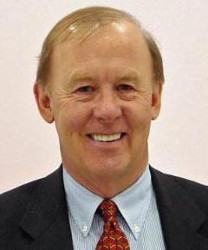Positioning the Trump Brand for Victory – What We Can Learn
Posted by Elena del Valle on December 13, 2016
By Jay Gronlund,
President, The Pathfinder Group

Jay Gronlund, president, The Pathfinder Group
Photo: The Pathfinder Group
Without doubt, Donald Trump’s election victory was a shock to most people, especially pollsters, the news media and those living in urban centers across the country. In some ways, it was a contest of character between the two most unfavorably perceived presidential candidates in history. However, from a branding perspective, the compelling reasons behind each vote was more about what each candidate stood for. And this is what branding is all about – making promises that resonate with people’s intense emotional desires, to connect with them.
To better understand the Trump brand and why it was successful, it is important to appreciate the basics of strategic branding. It starts with really understanding your target audience and especially their emotional profile. The brand promises and personality should respond to these intense feelings, to consistently establish an impression that is focused, relevant and credible. While Monday morning quarterbacking is always easier, here are some lessons from Trump’s brand success:
1. What Motivates Voters Most – Behind voters’ negative reactions to all the accusations and lying in this election was one dominant emotion – TRUST. The lack of trust in the establishment and our fundamental institutions (e.g. corruption in government, Wall Street, the political system, etc.) was so intense that the choice was ultimately about change. Yes, electing the first woman was a factor, for example, but not nearly as compelling as the fear and frustration caused by growing income inequality, the perception of losing jobs to immigrants and trade deals, and the overall stagnation of congress (According to a CNN survey, Trump was preferred by more white women, 53 percent versus 43 percent for Hilary Clinton.) In branding, those extreme emotional desires are called the proverbial “sweet spot.”
2. Positioning the Trump Brand for This Sweet Spot – Notwithstanding all the outrageous character flaws and irrational policies of Trump, he constantly reinforced his brand perception as the ultimate outsider or anti-establishment candidate. He was certainly unqualified for office as he had no experience in government, but this became an advantage for many white middle-low income voters who still make up the bulk of population and are more likely to vote. Clinton was viewed as part of the corrupt establishment, both government and Wall Street, compounded by people’s pervasive distrust of her, so most of these white voters developed antipathy for her.
3. Emotions Overpower Rationality – Neuroscientists have proven that emotions are more influential for driving brand decisions and action than rational thinking, especially when the intensity of a critical emotion such as trust is extreme. The contrast between Clinton and Trump in what they represented for the future could not have been more striking. With her diligent research, detailed plans, and scripted debate performances, Clinton impressed everyone with her professionalism and experience. But that wasn’t what many people wanted. They simply did not care about these rational details as much as a change from the past. Trump was vague, boorish and repetitive, but he consistently presented himself as a change agent, just what middle-low income white people wanted.
4. Trends Should Not Be Ignored – Tapping the emotional pulse of one’s audience is essential for re-positioning a brand. We are living in a global society today, and evidence of populist trends around the world should have raised a red flag for Democrats. They say problems occur in “threes.” First, Brexit surprised the world, but it showed how fear about losing relevance (and jobs), declining incomes, and strained public services caused by immigrants, drove older white people who vote more often to tip the balance toward Brexit. Only 42 percent of Millennials, who enjoyed the benefits of the European Union, turned out to vote, compared to 80 percent of 50 plus voters. Similarly, in the United States the turnout for Millennials was lower than expected for both presidential candidates. Then the rejection in Colombia of the peace agreement with terrorists also surprised pollsters and the rest of the world. This vote was driven by a lack of trust and feelings of revenge that could not be forgotten among most voters. Similar emotions proved to be relevant in the United States and helped carry Trump to victory.
5. Social Media and Brand Impressions – The shocking statements by Trump provided an unprecedented, ongoing feast for social media. While most of this was negative and truly outrageous, Trump raised his brand awareness and maintained a primary focal point for news stories throughout the campaign. His language was crass, his past experiences insulting, and his political positions vague and over simplistic. But the net brand impression reminded white voters how he was different – a fresh outsider who provided hope for those looking for a change.
The key for a sustainable, successful brand is whether promises can be delivered over time. Future actions by the Trump government will determine whether this election was an aberration or a constructive improvement for our society, economy and political system. This will also define what the Trump brand truly stands for, and also whether the American public will become more trustful of his brand.
Jay Gronlund is founder of The Pathfinder Group, a business development firm specializing in emotional branding, ideation facilitation and international expansion. His background has included executive positions in marketing and new product development at reputable companies in the US and abroad. He is also vice president, managing director of Latin Pulse – USA, a marketing and research firm headquartered in Mexico City. Jay teaches branding at NYU, and has a B.A. from Colby College and MBA from Tuck at Dartmouth.









